“Voice” is a term used to describe the personality of a writing style. According to Ursula Le Guin, since what is written is voiceless until read aloud, a voice style acts as a “shorthand for authenticity.” In UX design, this authenticity is crucial — a brand’s voice and tones of voice should communicate a genuine identity to its users.
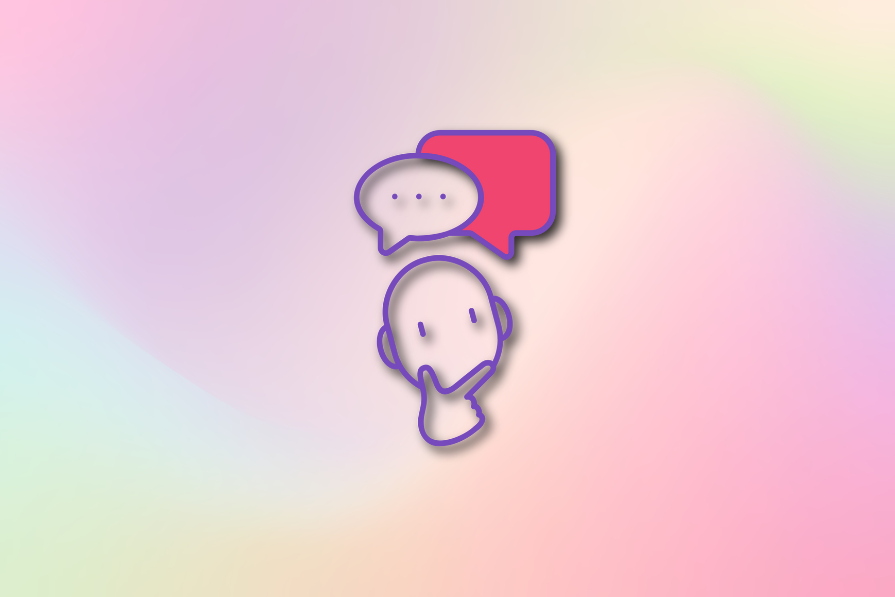
Tone, however, should adapt to context. While the personality of a brand or product should remain consistent, the tone of its written communications can shift depending on the situation. A product’s tonal range must address both serious interactions (e.g., critical data inputs or error messages) and lighter, more enthusiastic moments. Striking this balance is key to building trust and engagement.
When product design neglects tone and voice, it risks coming across as cold, confusing, or even untrustworthy. In this blog, I look into how tones of voice can shape user experiences.
We can get more control over the emotion required by an informational context by using tone as a lever — dialing down or increasing these ingredients like in a chef’s secret spice mix.
To most people, terms like “formal,” “respectful,” or “authoritative” may seem interchangeable. Similarly, “informal,” “enthusiastic,” or “funny” may blur together. However, for UX writers, these subtle distinctions matter immensely.
For example, it is possible to use a formal tone but still be disrespectful or a friendly tone without being overly casual. Tones can also be combined or overlapped. Duolingo, for example, combines enthusiasm with humor, supported by its animated characters and whimsical design elements.
A formal tone is conventional for work environments, government institutions, or universities. It prioritizes clarity, respect, and grammatical correctness — favoring full words over contractions (e.g., “do not” instead of “don’t”).
When aiming for a formal tone, avoid slang, idioms, and other elements of casual speech. Formal language should not cross over to insipid rudeness and is best based on mutual respect. If overdone, this tone can come across as monotonous and lacking personality.
When talking about serious topics — especially concerning sensitive, confidential data, financial or medical matters — it is crucial to strike an assuring, authoritative tone.
In these situations (for example, password creation or entering payment information), it must be conveyed that the system knows what it is doing.
The NHS (UK) website strikes an authoritative, matter-of-fact but sympathetic tone:
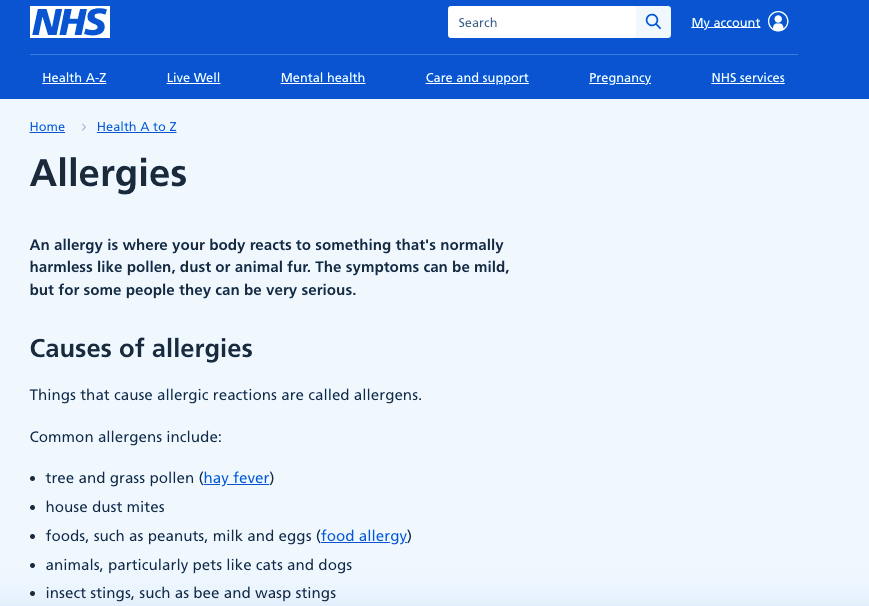
A contrast to an authoritative tone is a punk and brash tone that celebrates rebellion and action. Brands like Apple (“Think Different) or Nike (“Just Do It”) project a kind of attitude that projects an anti-authority image.
The Greenpeace content style guide offers great pointers for striking a friendly tone. It suggests that when talking to new supporters, including activists and volunteers or potential supporters, using a friendly tone helps to make people feel at ease.
The writing should be as if you’re having a face-to-face conversation. To achieve this, the guide suggests using contractions (the opposite of formal language):
To have a friendly tone, language should be inclusive and should speak directly to people (such as you and we) and simplify complicated words. Care should be taken in the use of idioms and colloquial references that might not be well understood by people who don’t have English as a first language.
Finally, anything racist, sexist, or derogatory must be avoided.
This is probably one of the most high-risk, high-reward tones. Humor can be difficult to get right, but, at the same time, when done well, it can bring positive associations with a brand. Humor makes a brand engaging and youthful. The Mailchimp style guide explains how finely nuanced a humor style needs to be:
“Our humor is dry. Our sense of humor is straight-faced, subtle, and a touch eccentric. We’re weird but not inappropriate, smart but not snobbish. We prefer winking to shouting. We’re never condescending or exclusive — we always bring our customers in on the joke.”
Tone has a direct relationship with trust and satisfaction. Therefore, a brand’s tone of voice should be consistent in conveying its values.
The University of Leeds communication style guide explains:
“Our tone of voice is the way in which we write and speak, what we say and how we say it. Like a person, what we say is dictated by our principles, experiences and aspirations, how we say it is informed by our personality.”
Whenever content is created, the context and what the product’s audience might find relevant and motivating are the major considerations to be made. As the Greenpeace style guide puts it:
“We don’t change who we are, but we do moderate our tone, depending on whether we’re taking direct action to stop drilling in the arctic or lobbying the UN.”
Communication is always most effective when the reader feels that she or he is being addressed directly. In some cases, this means adopting a more informal tone, and in others, something more sophisticated will be required.
“Style to be good must be clear,” wrote Aristotle. “Clearness is secured by using words that are current and ordinary.”
Brevity takes time and effort to achieve. The ability to judiciously use exact words to convey both meaning and emotion is are fundamental skill of a writer. To write a sentence, and then, through a process of rumination, editing, and acquired vocabulary, it can often be possible to summarize writing into one impactful word.
This requires developing a sensitivity towards language and developing a love for words.
A great way of doing this, Lynda Barry advises, is to collect lists of words.
In What It Is, Barry explains how to make a “Word Bag.” A word bag is basically just a collection of words you find interesting and write down when you encounter them (stuffing them in a bag, envelope, or just lists in a notebook). You can randomly pull out a chit or select a word when you need to begin a piece of writing, and you’re not sure where to start. One word generally follows another. “Collecting” words and building associative power is a fantastic exercise to build vocabulary and writing skills.
Here is a list of the various types of tones that you can consider while defining a product voice’s range:
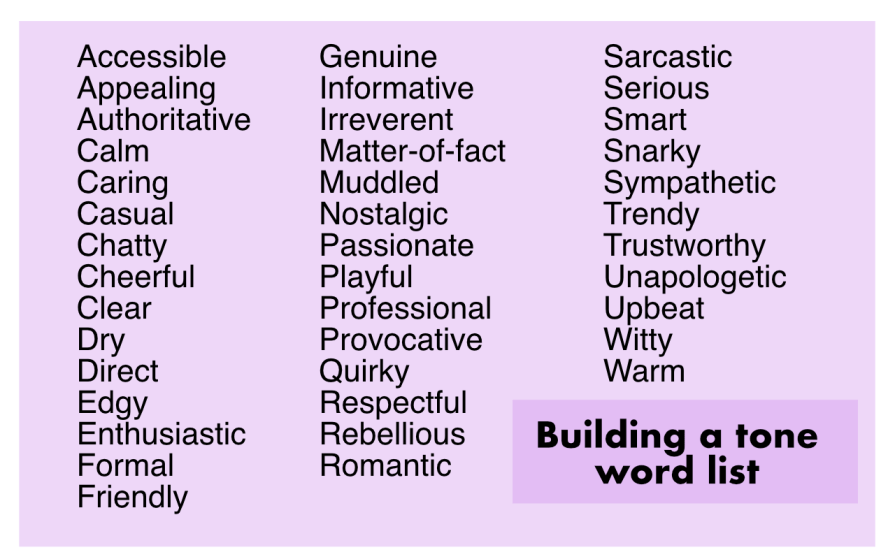
When curating a list of tone words to incorporate, opposites should be considered so that they can be avoided. For instance, to sound confident, words and expressions that convey insecurity should be avoided, such as:
To maintain consistency across different platforms, it is important to develop guidelines based on principles. These principles should underpin all the content and the way the work is done to produce content. They should be kept in mind when planning, creating, delivering, and maintaining content.
These principles can be:
Flexibility and modularity make content adaptable. By considering all the channels and use cases at the outset, content can be designed to be usable on the web, on social media, and in email from the very beginning.
Part of finding the right tone depends on research and asking questions like:
Monzo aims to position itself as an irreverent, outsider fintech startup. As a bank that lives on a phone, words make up a huge part of the brand and customer experience. Its brand tone is defined by the following principles:
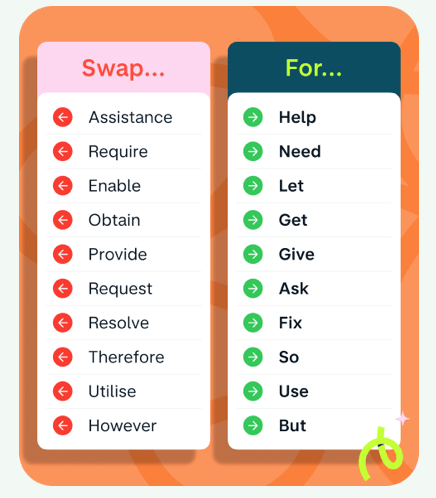
Monzo aims to transform the “mundane with moments of unexpected delight” and “always look for ways to inject a little magic” into the customer experience. For the brand, humor is “a delicate seasoning in our writing.” They want people to feel like they are part of the joke, not the target of it.
This positioning has allowed Monzo to be a major disruptor in commercial banking. Increasingly, one can see even high street banks trying to adopt a lighter tone in order to appeal to younger demographics.
Duolingo makes learning languages fun and engaging through enthusiasm, dynamic animations, characters, stories, and whimsical humor. Its voice identity is as much in words as it is visual (through typography, animation and logos).
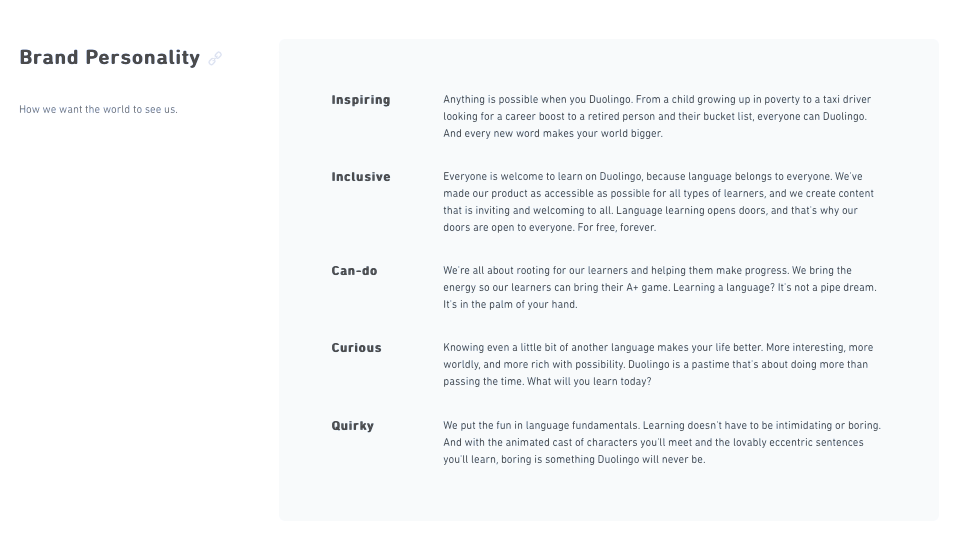
Duolingo’s mission “is to develop the best language learning education in the world and make it universally available. Everyone can Duolingo.”
The aim of the brand is to make education motivating and inspiring with bite-sized lessons based on learning science. The principles of inclusivity and accessibility are the core of Duolingo’s voice. This has made Duolingo loved by people of all ages and backgrounds and used across the globe.
Recently, there has been much media excitement surrounding the rebranding of the Jaguar automotive brand. The voice and tone of the re-brand, especially the word selection, conveyed a sense of anticipation, excitement, and a commitment to futuristic design.
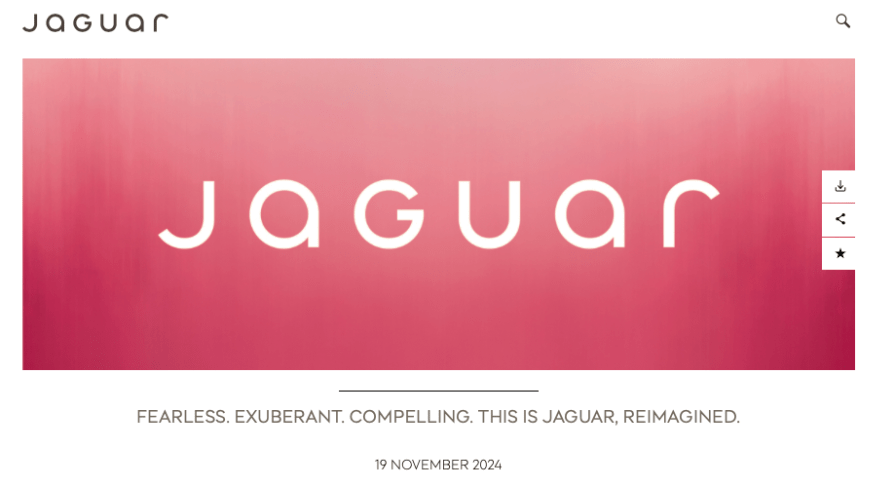
The vision for Jaguar today was informed by the philosophy of its founder, Sir William Lyons, who believed that ‘A Jaguar should be a copy of nothing.’ This makes originality a core principle of the brand. Its voice is intended to be imaginative, bold, artistic, unique, and fearless.
The brand reimagining seeks to make the product relevant to a contemporary audience. The campaign is regarded as one of the most effective in recent memory, going a long way to restoring the status of Jaguar as a talked about brand and expanding the Jaguar community.
Voice is an essential part of brand identity. It helps a product to stick out in a crowded market. It makes a business unique and memorable and is as vital as its logo and color palette. Voice stays consistent, but tone changes depending on the context.
I have mentioned a few broad examples to introduce the subject. However, there is a huge variety of tones that can be combined in infinitive variations to make a product sound distinctive, engaging, and interesting.
A good way to understand how brand voices and tones are defined is to read brand identity documents that are available on the internet, such as those of Duolingo and Monzo (that I have linked above). Try to find some others, especially of a brand you admire. How would you write such a document? What principles will you identify as definitive of the brand voice? How will you ensure that this voice remains consistent across various technology platforms and formats?
When tone is used thoughtfully, it brings a product to life. A friendly tone can make users feel welcome, a confident tone can build trust, and a respectful tone shows you value their experience. The right tone not only makes communication clearer but also strengthens the emotional connection between users and your brand.
In the end, tone and voice make a product that feels human, relatable, and reliable — these are elements that help a brand create a lasting connection with users.
LogRocket's Galileo AI watches sessions and understands user feedback for you, automating the most time-intensive parts of your job and giving you more time to focus on great design.
See how design choices, interactions, and issues affect your users — get a demo of LogRocket today.

Small actions can have large consequences in complex systems. Here’s how UX designers can manage dependencies so users feel informed and in control rather than blocked or blindsided.

This article examines when hero sections are necessary in digital products, when they create friction, and how to evaluate them using UX goals, primary actions, user flow impact, and real-world alternatives.

AI speeds up tasks like research synthesis, ideation, and first-draft wireframes, but it can’t replace clarity, taste, or decision-making. Here’s a grounded look at what AI actually does well in UX right now.

Discover how to craft UX-friendly hero sections with examples, design tips, and strategies that drive engagement and conversion.